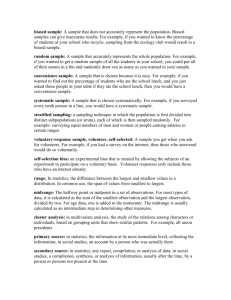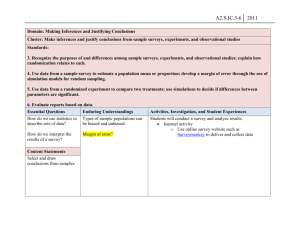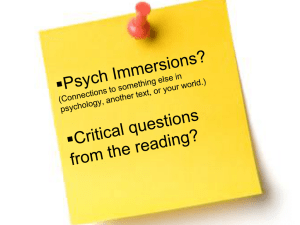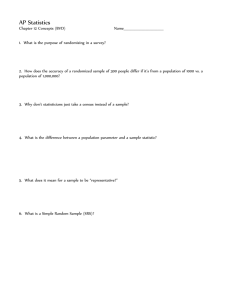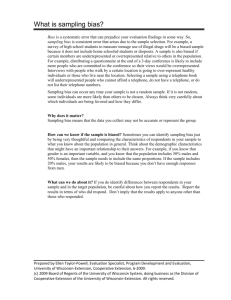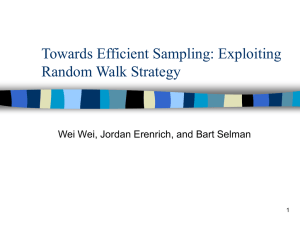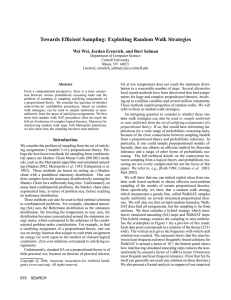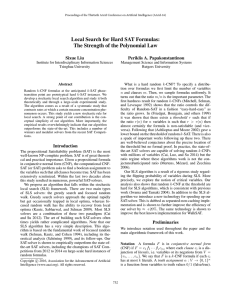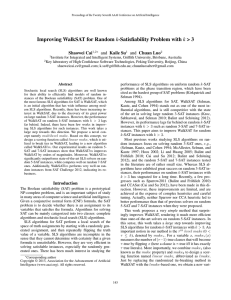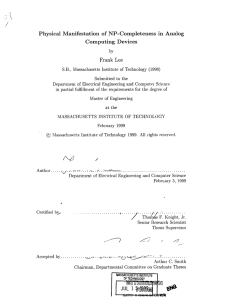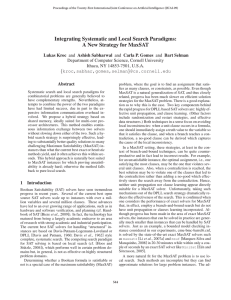Sampling Combinatorial Space Using Biased
advertisement
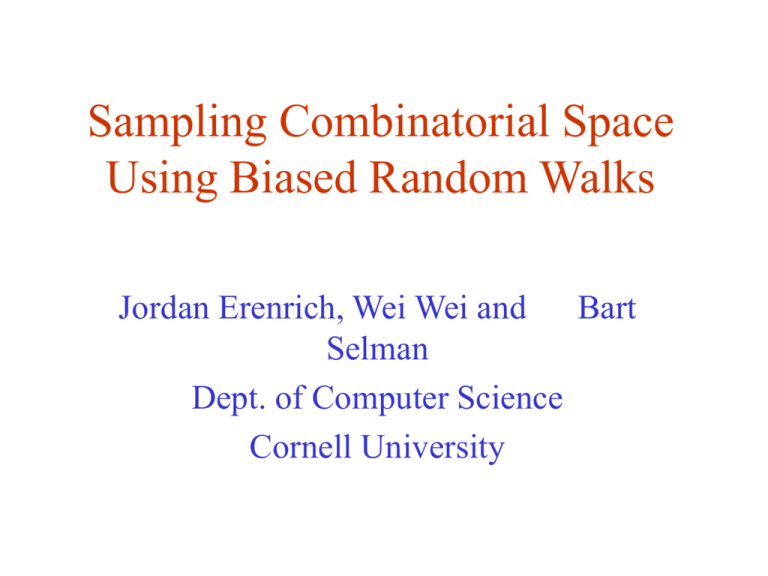
Sampling Combinatorial Space Using Biased Random Walks Jordan Erenrich, Wei Wei and Bart Selman Dept. of Computer Science Cornell University • Many forms of probabilistic reasoning can be effectively reduced to sampling satisfying assignments from a Boolean formula (an instance of SAT). • Question: Can state-of-the-art local search procedures for SAT sample effectively from the solution space? (as an alternative to standard Monte Carlo Markov Chain methods) Characteristics of Solution space: Solution Clustering • Visualization with multi-dimensional scaling (MDS) – Solutions to specific 75 variable, 325 clause 3-SAT instances – 75 dimensional solution projected to two dimensions – Distance between points approximates hamming distance Solution Probability • Consider a simple 2-SAT problem – x OR y • Consider a simple SAT heuristic – Starts with a random bit assignment – Randomly flip a bit until a solution is found • Consider the probability of finding each solution – x y Solution? Solution Probability 0 0 No N/A 0 1 Yes 3/8 1 0 Yes 3/8 1 1 Yes 1/4 Solution Probability Using WalkSat Algorithm • Empirically determined each solution’s probability (uf75-01 - 75 variable, 325 clause 3-SAT instance) • WalkSat finds every solution, but with very large range of probabilities (1:104) • Probability Clusters SA on SAT-75 - Multi-dimensional Scaling Using Hamming Distance Between Solutions 20 25 Most Often Found Solutions 25 Next Most Often Found Solutions Middle Solutions 25 Next Least Often Found 25 Least Often Found Solutions 15 10 5 0 -5 -10 -15 -20 -25 -10 -5 0 5 10 15 20 25 Probability Ranges in Different Domains Instance Runs Random 50*106 Hits Rarest 53 Logistics 1* 106 84 Hits Common-to Common -Rare Ratio 9*105 1.7*104 4*103 50 Improving the Uniformity of Sampling Mixed sampling strategy • To reduce the range of probabilities, we propose a hybrid local search algorithm: – With probability p, the algorithm makes a biased random walk move – With probability 1-p, the algorithm makes a SA (simulated annealing) move • In our experiment, we used – 50% WalkSat + 50% SA at a fixed temperature Results of the Hybrid Approach Our key figure. Solution Clusters Results on a random 3-SAT instance (70 vars, 301 clauses, 2531 solutions). Summary Proposal: Use SAT solvers to sample solutions from a combinatorial space. Findings: 1) WalkSAT does sample all solutions. 2) But, sampling can be highly biased. 3) Using a new hybrid strategy, we can obtain effective near-uniform sampling. Lesson: Hybrid of SA and biased walk, is a promising alternative to MCMC methods for sampling.

